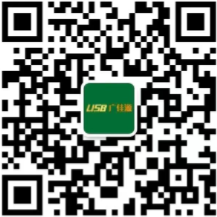 Mr. Chen:136-6225-2835
Mr. Chen:136-6225-2835
 Miss Chen:189-2385-0895
Miss Chen:189-2385-0895
Shenzhen Guangjiayuan Electronic Technology Co., Ltd
Mr. Chen: 136-6225-2835 (same WeChat account)
QQ: 979285705
Miss Chen: 189-2385-0895 (same WeChat account)
QQ: 2391552662
Chen Weiting :135-3824-4786 (same WeChat account)
Chen Weihao: 139-2459-4393 (same WeChat account)
Tel: 86-0755-33182327
Email: gjydz88@163.com
Website: www.usb-type.com
Address: Building 10, Hongxing Gebu Qixiang, Songgang Town, Bao'an District, Shenzhen, Guangdong Province
Recently, according to the official website of the USB-IF Association, the type-c 2.1 standard has been officially released, and the new generation of type-c 2.1 will support a high power output of up to 240W. It is understood that the type-c 2.1 standard is mainly an extension of PD3.1. Previously, the PD3.1 protocol was released, which increased the power output from 20V/5A to 48V/5A, and increased the output power from 100W to 240W. The newly released type-c 2.1 standard is mainly formulated for the output power requirements of USB cables. The wire of type-c 2.1 will be replaced with mainstream SPR wire to support 240W high-power output EPR dedicated wire.

The type-c 2.1 standard may be released to unify the interface of electrical devices, and electric vehicles are also applicable to the proposal of the European Union's unified charging interface bill last month, which suggests using the type-c interface as a universal charging interface for consumer electronics such as smartphones, computers, cameras, etc. Previously, some laptops and computer monitors used type-c interface, but most game books and high Refresh rate monitors continued to use the original power supply interface because of the insufficient output power of type-c 2.0 interface. The release of type-c 2.1 standard will solve the problem of insufficient output power. At present, the PD3.1 protocol supports a wide power output range of 3A/5V/9V15V/20V, 5A/20V/28V/36V/48V, with a maximum output of 240W. The type-c 2.1 standard also supports 240W output, which is 140% higher than the previous generation standard 100W, and can meet the power supply requirements of consumer electronic devices such as computer overclocking CPUs and high Refresh rate displays. It is incredible that the power supply parameters of 5A/48V in the PD3.1 protocol are consistent with the charging parameters of small two wheel electric vehicles. This also means that the charging interface of the electric vehicle may use the type-c interface, and the electric vehicle can be charged using a type-c charger that supports the PD3.1 protocol. The release of the type-c 2.1 standard is expected to achieve the unification of electronic device power supply interfaces as soon as possible.
The output power of type-c 2.1 is doubling, and the fast charging industry chain will usher in a larger market. Based on the global consumer electronics market in 2020, the shipment volume of smartphones is 1.29 billion units, tablets is 160 million units, laptops are 235.1 million units, and displays are 136.6 million units. These terminal devices have an annual shipment volume of approximately 1.8 billion units. For consumer electronic devices, fast charging is already a must-have. Every year, global consumer electronics show exponential growth, and the output power of type-c 2.1 doubles. The demand for fast charging is huge, and enterprises in the fast charging industry chain will experience the dividends brought by the new standards of type-c 2.1.
From the perspective of the fast charging industry chain, it is mainly divided into three parts: upstream, midstream and downstream. The upstream industry mainly covers the design of electronic components and schemes such as gallium nitride power devices, capacitors, resistors, etc. The midstream mainly focuses on Power management integrated circuit, master control chips, and cells, while the downstream mainly focuses on terminal equipment manufacturers and OEM factories.
In terms of the design of the fast charging scheme in the upstream of the industrial chain, foreign chip manufacturers TI, Onsemi, PI, Infineon, domestic enterprises Maoruixin, Nanxin, Chengxin Microelectronics, InnoSecco, etc. have introduced high-power fast charging schemes in the previous generation of type-c 2.0 standard, which have been recognized and used by terminal enterprises. In the context of the explosive fast charging market and the doubling of output power of Type-C 2.1, there is an urgent need for high-quality fast charging solutions that can meet the high power output needs of Type-C 2.1 to meet the large demand in the market. The revenue of upstream enterprises in the fast charging industry chain will be significantly increased.
In the middle of the industry chain, many companies have successively released power management chips, main control chips, and battery cells that can be applied to fast charging in the previous generation of standards. Wuxi Xinpeng Microelectronics Co., Ltd., a domestic enterprise, is one of the main suppliers of power management chips in the fields of home appliances, power supplies, and consumer electronics in China. It has launched a PN8161 main control chip for 18W PD fast charging, which has been widely used in fast chargers by multiple terminal equipment companies and has received unanimous praise from customers. The company is currently listed. According to the annual report of Xinpeng Micro, the company achieved a revenue of 429 million yuan in 2020, an increase of 28.11% compared to the same period last year. This shows the popularity of the fast charging market and the huge revenue it brings to enterprises. The increase in output power is suitable for more terminal devices, new standards, new protocols, and fast charging chips need to be redefined, ushering in a new market for fast charging chips.
The downstream of the industrial chain is mainly composed of terminal manufacturers and OEM factories. Taking terminal enterprise Anker as an example, Anker mainly sells consumer electronics products such as charging devices and audio devices. In 2020, under the global pandemic, various industries were affected to varying degrees. However, Anker's charging products continued to show a growth trend, with an annual revenue of 4.144 billion, accounting for 44.31% of the total revenue received. With the acceleration of the pace of life, users' demand for fast charging power continues to increase. In the previous generation standard market, the revenue of terminal enterprises downstream of the terminal industry chain has been so considerable. The release of the type-c 2.1 standard will generate greater market demand, and terminal enterprises will also experience the huge dividends brought by the new standard release.
The release of type-c 2.1 new standards and the update of the fast charging market are also a good opportunity for small and medium-sized enterprises to enter the fast charging field.
Infineon is closely following market trends and has launched the PD3.1 protocol chip, ranking first globally in power semiconductor devices. It has also conducted research in the field of fast charging and has launched a series of fast charging solutions that can meet 45W, 65W, and 100W power outputs. Infineon closely followed market trends and released the world's first fast charging control chip that supports the PD3.1 protocol in Munich, Germany on July 29th, after the release of the PD3.1 protocol. It can be used in conjunction with type-c 2.1.

PMG1-S1 is the world's first fast charging main control chip that supports the PD3.1 protocol, with a maximum output of 5A/28V 140W. According to the official website, the chip has built-in Arm ® Cortex ®- M0 processor, 256KB programmable flash memory, and 12KB SRAM cache. The chip function can be programmed through GPIO interface, and LDO regulator is added to suppress input ripple noise. CAPSense intelligent sensing algorithm is used for Auto-Tune. 2x 7-bit current output IDAC can be configured as a single 8-bit IDAC. Infineon integrates multiple protection mechanisms such as overvoltage/current protection, short circuit protection, and reverse current protection in PMG1-S to protect the circuit. PMG1-S1 adopts a QFN packaging of 6.0mm * 6.0mm * 0.5mm 48Pin, with a temperature resistance environment between -40 ° C and+85 ° C.
The article mentioned that the previous generation type-c 2.0 standard only supported outputs up to 100W. Why did type-c 2.1 have a 120W fast charge before its release?
In fact, the 120W fast charging on the market is a modification of the interface based on the type-c 2.0 standard. Manufacturers have made bold pins or increased the number of pins in the type-c connector interface to meet higher power output.
The release of the type-c 2.1 standard will usher in a new transformation in the charger market, which is the best time for small and medium-sized enterprises to enter the fast charging field. The release of new standards will usher in a larger market for the fast charging industry chain.
Source: Fresh Cargo Terminal
Contact person:
Mr. Chen 136-6225-2835 (same WeChat account)
Miss Chen 189-2385-0895 (same WeChat account)
Chen Weiting 135-3824-4786 (same WeChat account)
Chen Weihao 139-2459-4393 (same WeChat account)
Address:
Building 10, Hongxing Gebu Qixiang, Songgang Town, Bao'an District, Shenzhen, Guangdong Province
 |
 |
| Technology 1 | Technology 2 |